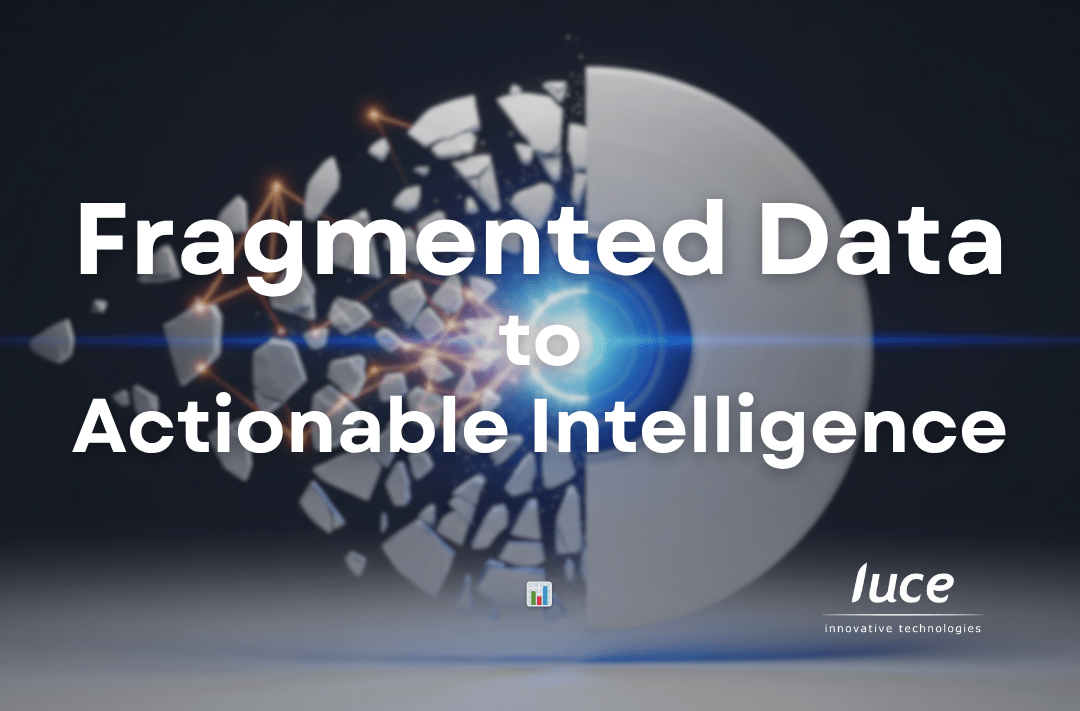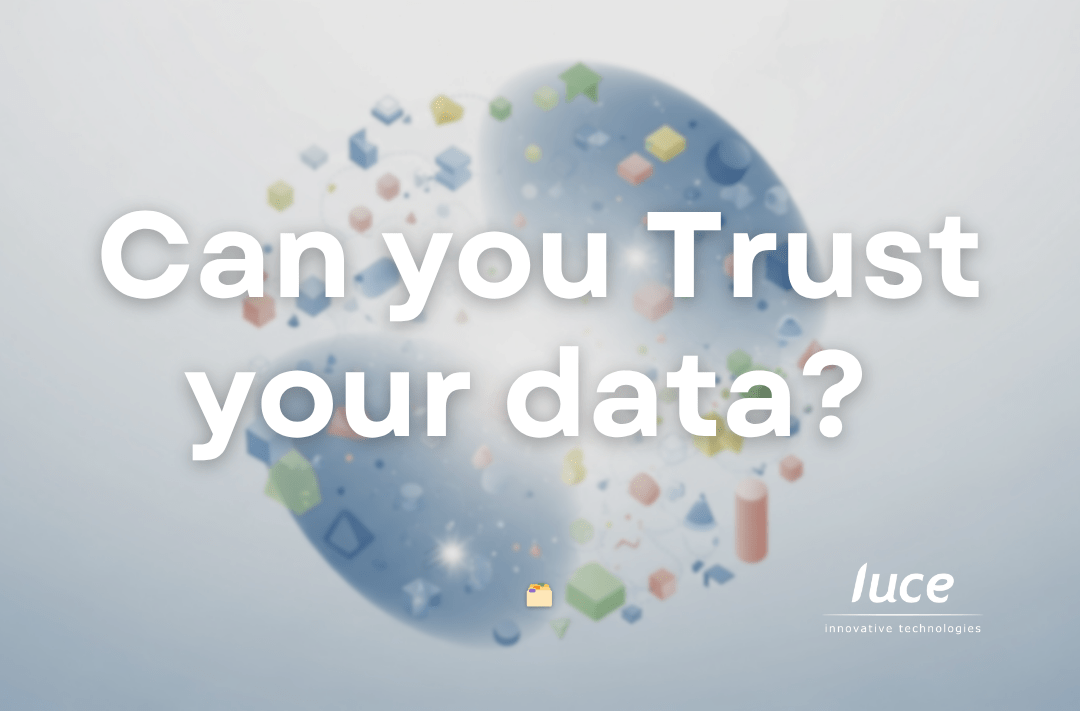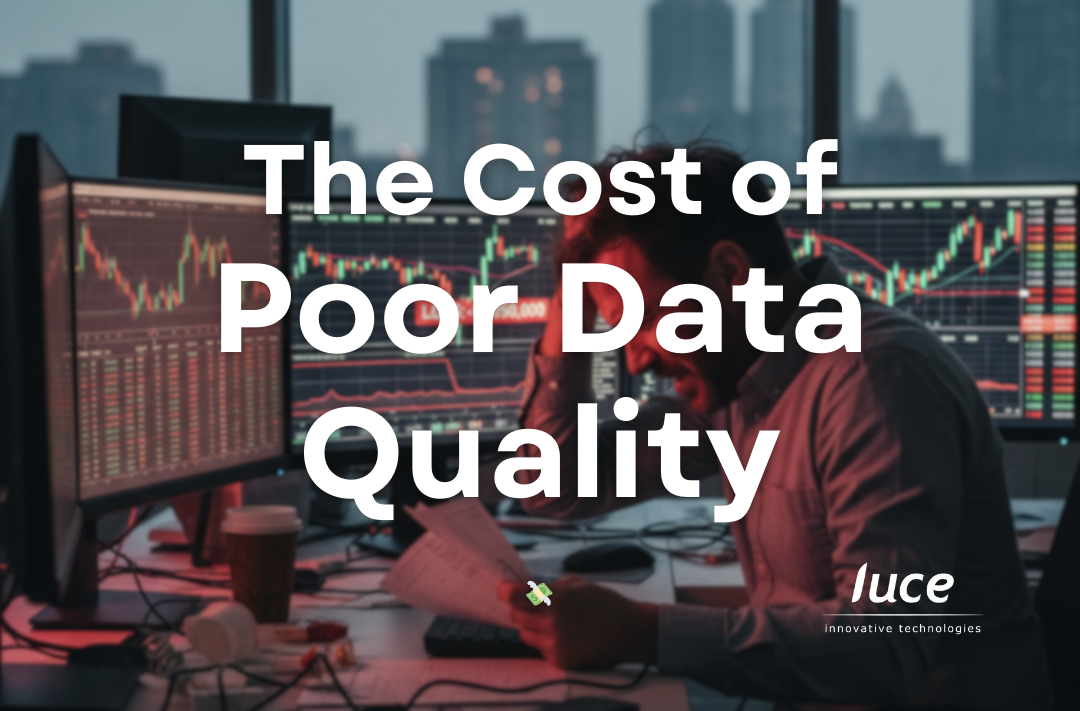
5 steps to turn fragmented data into actionable intelligence
Nowadays, every company wants to become data-driven (or already is), but most organizations hit a frustrating wall: information is rarely as clean, accessible, or coherent as needed. Far from being an isolated technology failure, the problem of “Dirty Data” is a symptom of structural challenges in processes, technology, and culture.
If you have ever wondered why it is so difficult to obtain that “Single Source of Truth” that theory promises, this article explores the root causes of digital disorganization and the inherent risks of continuing to operate without a solid data architecture.
Four Root Causes Why Data Is Disorganized
Data doesn’t get disorganized by itself; this fragmentation is the direct result of business decisions and infrastructure deficiencies that, when combined, generate a chaotic environment:
The Inertia of Legacy Systems (Legacy)
Much of the corporate infrastructure relies on systems that have been operating for years or decades (ERP, mainframes, etc.). These systems were designed for transactions, not for transversal analytics.
- Isolated Design: Each legacy system operates as a silo, with its own rules, nomenclatures, and storage formats.
- Integration Complexity: Extracting data from these systems is often costly and slow, which discourages the creation of updated reports and models.
The Challenge of Velocity and Variety (Velocity & Variety)
The arrival of the digital environment (web, social media, apps) has accelerated data generation and diversified its nature, exceeding the capacity of traditional architectures.
- Dispersed Raw Data: New data sources are constantly being created (web analytics, paid media, ecommerce) that do not have a centralized storage location, remaining dispersed and unstandardized.
- Need for Real Time: Key operational decisions demand data updated in Real Time (RT), a requirement that nightly batch extraction processes cannot meet. This speed clashes with the slowness of inherited architectures.
The Gap between Business and Technology (Data Governance)
The lack of solid Data Governance creates a leadership void over the company’s most important asset.
- Absence of Owners: Data owners have not been formally defined, meaning no one is responsible for defining the quality, integrity, and taxonomy of a specific dataset.
- Ambiguity in Business Rules: The lack of clear business rules for data leads to inconsistencies. When teams meet, conversations focus on data quality, not business strategy.
The Lack of a Central Intelligence Layer
Many companies store data but fail to create a layer where Intelligence (Advanced Analytics and AI models) can act efficiently.
- Raw Data for AI: If AI models connect directly to raw or insufficiently processed data, the complexity of cleaning and transformation is transferred to the data scientist, drastically slowing down AI projects and compromising prediction quality.
- Accumulation without Analysis: Marketers and analysts feel overwhelmed: a recent report indicated that marketing teams handle 230% more rows of data than in 2020, without enough time to analyze them thoroughly.
Five Steps to Move from Data Fragmentation to Actionable Intelligence
To leave digital disorganization behind and build a data ecosystem that supports strategic decisions, it is fundamental to follow an architectural and methodological approach in the implementation of a Data Platform.
Step 1: Source Diagnosis and Architecture Design
Before moving data, it is crucial to understand the As-Is (current state).
- Audit and Planning: Identify all data sources (ERP, CRMs, web analytics, logs) and their flows. Define the target architecture (Cloud or On-Premise) that is cost-optimal and scalable.
- Establishing Layers: Design the architecture by layers (RAW, Master, Analytics) to ensure that data is stored immutably (in the RAW Layer) and correctly cleaned and standardized (in the Master Layer).
Step 2: Centralized Ingestion and Initial Governance
This step focuses on mass ingestion and data protection.
- Connection and Load: Implement connection mechanisms to extract data from sources, prioritizing those requiring Real Time (RT) or Near Real Time (NRT).
- Minimum Viable Governance: Configure access roles and permissions for the Data Warehouse (DW) and implement the Data Catalog so users understand the origin and taxonomy of the information.
Step 3: Transformation and Data Quality
This is where the consistency problem is solved.
- Business Logic: Develop the Extraction, Transformation, and Loading (ETL/ELT) processes that take data from the RAW Layer and apply the agreed business logic for cleaning and standardization, thus populating the Master Layer.
- Masterization: Ensures data integrity and coherence, creating unique records and eliminating the duplication that caused “KPI Wars.”
Step 4: Intelligence and Advanced Modeling
With clean and consistent data, true intelligence can be created.
- Analytics Layer (Data Marts): Optimized data structures are created for BI consumption, reporting, and AI models.
- Predictive Models: Clean data becomes a reliable input for developing Machine Learning (ML) models and Advanced Analytics (e.g., Attribution Models, Sales Scoring, demand prediction).
Step 5: Visualization and Activation
Intelligence must be visible and actionable for business teams.
- Visualization: BI tools (dashboards) are connected to the Analytics Layer to guarantee a single version of the truth and adequate performance.
- Activation (Feedback Loop): Mechanisms are implemented so that insights (such as alerts, predictions, or audience segmentation) return to business systems (e.g., Marketing Automation platforms or APIs) in a timely manner for action.
By unifying, cleaning, and governing information, Luce IT’s Data Platform eliminates the risks inherent in fragmentation, allowing your organization to move from reacting to chaos to acting with intelligence.
Stop accumulating dispersed data and start making decisions based on a single version of the truth. Sign up for our webinar “Let’s talk about… Smart Data” this Wednesday and start building your data-driven strategy with solid foundations!
FAQ
What is “Real Time Ingestion” and when is it necessary in a Data Platform?
Real Time Ingestion (RT) is the process of capturing and moving data at the moment it is generated, with minimal delay. It is necessary for critical operational use cases, such as fraud detection, live logistics tracking, or instant web personalization, where a delay could compromise decision-making or the customer experience.
How does the Master Layer help resolve “KPI Wars”?
The Master Layer applies transformation and normalization logic to raw data. By doing this, it ensures that all departments use the same definition and format for key metrics (KPIs), resolving inconsistencies that arise when each silo uses its own version of the data. This establishes the “Single Source of Truth” for the company.
What role does Data Governance play in the efficiency of the Data Platform?
Data Governance is the structure of people, processes, and technologies that defines and supervises how data is used. In the Data Platform, its role is crucial because it establishes quality rules (avoiding errors and duplicates) and roles (data owners), allowing ingestion and transformation processes to be automated, reliable, and efficient, saving time and costs in the long run.
What does it mean for the architecture to be “cost-optimal” and scalable?
It means the architecture is designed to utilize cloud resources efficiently, optimizing storage costs (using low-cost technologies for massive data) and processing costs (paying only for intensive use). Scalability implies that the platform can grow and handle large volumes of data or users without affecting performance or requiring fundamental redesigns.
Does the Data Platform eliminate the need for Legacy systems like the ERP?
No, the Data Platform does not eliminate the ERP or other legacy systems. Its function is to decouple the analytics layer from these transactional systems. In fact, legacy systems are the data source for the platform. By decoupling analytics, the platform allows legacy systems to be modernized at their own pace without impacting reporting or AI models.



